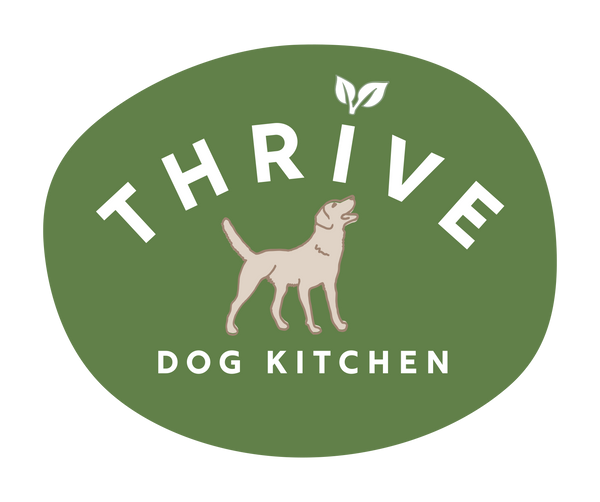Obesity in Dogs
Obesity in dogs is a problem that doesn’t affect just Labrador Retrievers. It affects all breeds, from the tiniest of chihuahuas to the largest of newfoundlands.
The rate of obesity in dogs globally, including New Zealand, is steadily climbing. Published studies suggest that 59% of dogs are overweight worldwide. A 2019 study estimated that 26.1% of dogs in New Zealand are overweight; and a further 2.3% are considered obese. These figures raise concerns for the health and well-being of dogs, not just here in New Zealand, but the rest of the world.
While it is a preventable medical condition, many dog parents don’t realise their dogs are overweight. This leads to the growing problem often being missed and negative health outcomes for dogs.
Contributing Factors for Today's Overweight Dogs
There are several contributing factors to dogs being overweight, but the top two are nutrition and exercise.
Other contributing factors may include:
- Genetics
- Age
- Spaying/neutering
- Treat quantity and quality
- Disease (e.g. hypothyroidism)
- Pharmaceuticals
- Food sensitivities
Nutrition
Most dogs are fed a high-carb, ultra-processed dry food. Dogs do not have a requirement for carbohydrates, yet the average bag of dry food is often more than 50% carbohydrates usually sourced from corn or potatoes; both of which can lead to an increase in insulin levels.
Dr. Karen Becker Shaw, DVM and Rodney Habib describe it as “diabetes in a bowl of kibble” with a side of pesticides because many of the grains used in these foods will be covered in pesticides, herbicides and fungicides.
The “$60 billion fast-food engine” of the pet food industry plays a contributing role in the obesity epidemic. Despite dogs not requiring carbohydrates and knowing that it is a leading cause for obesity, pet food manufacturers continue to produce food that is 50-60% carbohydrates in the form of wheat, corn, and rice.
In addition, as there is no legal requirement to state the carbohydrate content of pet food, manufactures can “mislead” consumers into thinking there is more protein and fat, then carbs in the pet food.
If you fed yourself the same ultra-processed food for breakfast, lunch and dinner you would expect to gain weight. The same can be said for dogs, but they don't have a say in what they are fed.
Exercise
Exercise is a key component to dogs maintaining a healthy weight. Dogs that exercise less and live a more sedentary lifestyle increase their risk of becoming overweight.
A 2017 study published in the Journal of Nutritional Science found that, “dogs that were reported to be overweight, exercised less frequently and for a shorter time, than those not reported to be overweight.” The study also highlighted that the odds of being overweight increased for dogs that were exercised 4-6 times per week, 1-3 per week and not exercised at all compared to those that were exercised daily.
When overweight or obese dogs are exercised it is at a less vigorous level of intensity then fit dogs, which may prevent them from losing weight. There may also be a correlation between being overweight and exercising for shorter periods. Studies show that it is best to exercise your dog daily for as long as possible.
Bear in mind, that as your dog ages, the amount they can exercise in one session will decrease. You will need to exercise them more frequently for shorter periods, whether they are overweight or not.
Breeds Genetically Pre-disposed to Obesity
Basset hounds
Beagles
Boxers
Cairn Terriers
Cavalier King Charles Spaniels
Cocker Spaniels
Dachshunds
Doberman Pinschers
Golden Retrievers
Labrador Retrievers
Scottish Terriers
Shetland Sheepdogs
West Highland White Terriers
Health Risks for Overweight Dogs
Obesity in dogs has several health consequences. It is linked to a series of health issues, including:
- Diabetes
- Osteo-arthritis
- Cancer
- Cardiorespiratory diseases
- High blood pressure
- Decreased respiratory capacity
- Orthopaedic disorders
- Chronic kidney disease
- Bladder/urinary tract disease
- Liver disease
- Low thyroid hormone production
The health effects on an overweight dog are different to that of a human. The physiological impact of an extra kilogram or two on a dog is more significant than for a human. One consequence is the extra weight may lead to hip deterioration and arthritis, even in a young dog.
Being just 10% overweight decreases a dog’s lifespan by one-third and pre-disposes them to heart, kidney and liver disease as well as diabetes, arthritis and cancer.
Obesity in dogs will shorten their lives and change their mental state. It will also impact the dog parent, both mentally and financially. Dog parents of overweight dogs spend 17% more in healthcare costs versus dog owners of healthy weight dogs; and spend 25% more on medications.
Is My Dog Fat?
Society has normalised that a fat dog is a healthy dog or at least looks “healthy” because that’s what we see more of. When we see a fit dog, the tendency is to think they are underweight and sick.
Many dog parents do not see their dog being overweight or obese as a problem. A survey of 1104 pet owners in the US found 356 (32%) thought their dog was overweight or obese, but only 3 saw it as a problem.
Signs that your dog is overweight are:
- A large body relative to the legs.
- Excess fat around the neck and the underside of the belly.
- Round appearance, especially when viewed from above.
- Decreased activity level.
- Difficulty rising and climbing stairs.
- Excessive panting during activity.*
While regularly weighing your dog may give you a general idea of your dog’s weight, a more objective method is with the Body Condition Score (BCS).
Jean Dodds and Diana Laverdure, provide a detailed explanation of how to conduct a BCS on your dog in their book “Canine Nurtigenomics”:
All pet caregivers should regularly examine their dogs every 2-4 weeks:
- Observe the dog from the side and above.
- Palpate shoulder blades, spine, ribs, hips and belly to feel the amount of overlying fat.
- BCS is based on either a 5-point or 9-point scale; the middle number (3 out of 5 or 5 out of 9) reflects optimal body condition (15-25% body fat).
- Lower numbers reflect degrees of “under-condition”; higher numbers reflect degrees of “over-condition”.
- A score of 5 of 5 or 9 of 9 indicates > 35% body fat, which means an obese dog.
TIP – When you visit your veterinarian ensure they perform a BCS on your dog, not just weigh them on the scales.
*Excerpted from: “Canine Nutrigenomics: The New Science of Feeding Your Dog for Optimum Health”. W. Jean Dodds, and Diana R. Laverdure, 2015; DogWise, Wenatchee, WA. 315 pp.
How Can I Help My Dog Lose Weight?
Before embarking on weight loss regime for your dog, consult with your veterinarian. They can examine your dog for underlying conditions that may be the cause for the weight gain.
To improve your dog’s health and help encourage weight loss or maintain weight, implement as many of the following as possible:
- Replace as little as 10% of your dog’s processed kibble with fresh food
- Incorporate more pre and pro biotic foods
- Include high-quality functional carbohydrates
- Feed as much fresh food as possible
- Add a small amount of fruits and vegetables
- Limit or remove processed foods
- Do not free feed
- Exercise your dog daily
- Hide their food to replicate hunting, to stimulate them mentally and physically
- Feed health treats in small quantities on a limited basis.
Jessie's Weight Loss Journey
Jessie’s weight gain snuck up on us. Prior to her being diagnosed as overweight we were battling with keeping weight on her. This led her to being underweight despite being fed a significant amount of kibble. We were surprised when she climbed on the scales and the extra-large number flashed back at us. Not being able to see her waist was the push we really needed to help her loose the extra weight.
We first tried reducing the amount of food we fed her, but that didn’t work. Then, we switched her to a weight-loss kibble, which again didn’t make a difference. By this time, we were frustrated and at a loss of how to help our beloved dog.
Fortunately, we found a veterinarian who encouraged us to put Jessie on a fresh whole food diet with no processed foods. Within 6 weeks we started to see the weight come off her. Her energy levels increased, and she was loving the variety of the fresh foods.
According to Dr. Conor Brady of Dogs First, “dry-fed dogs fed higher protein diets lead to greater weight loss in obese dogs and maintained their lean body mass.” Jessie is a perfect example of this. Switching her from kibble to fresh proteins, along with healthy fats and functional carbohydrates enabled her to lose the weight and maintain a healthy weight today.
Dogs will not reach optimum health if they are overweight. If you think your dog is overweight reach out to your local holistic or integrative veterinarian, or canine nutritionist for support and guidance.

